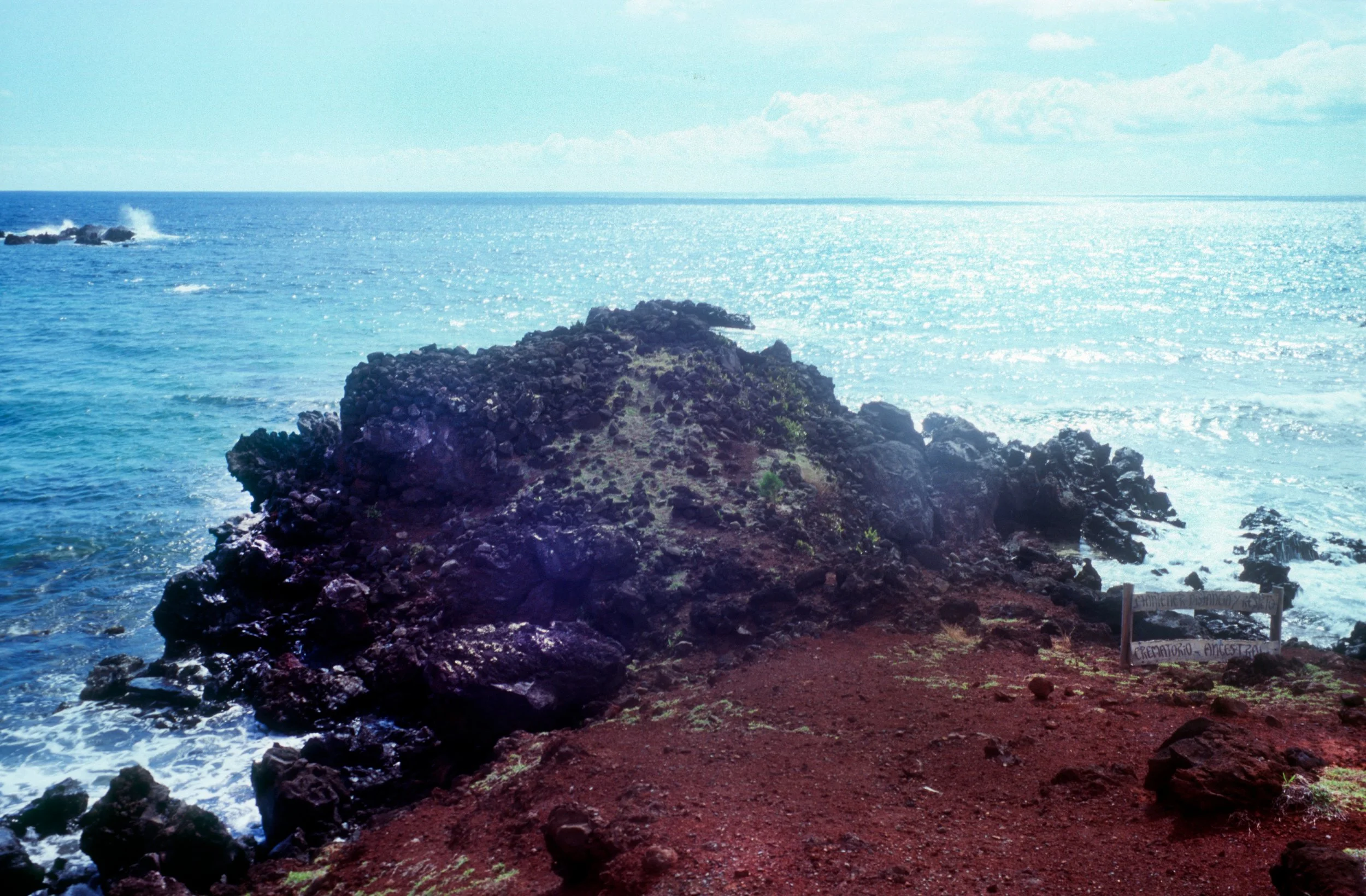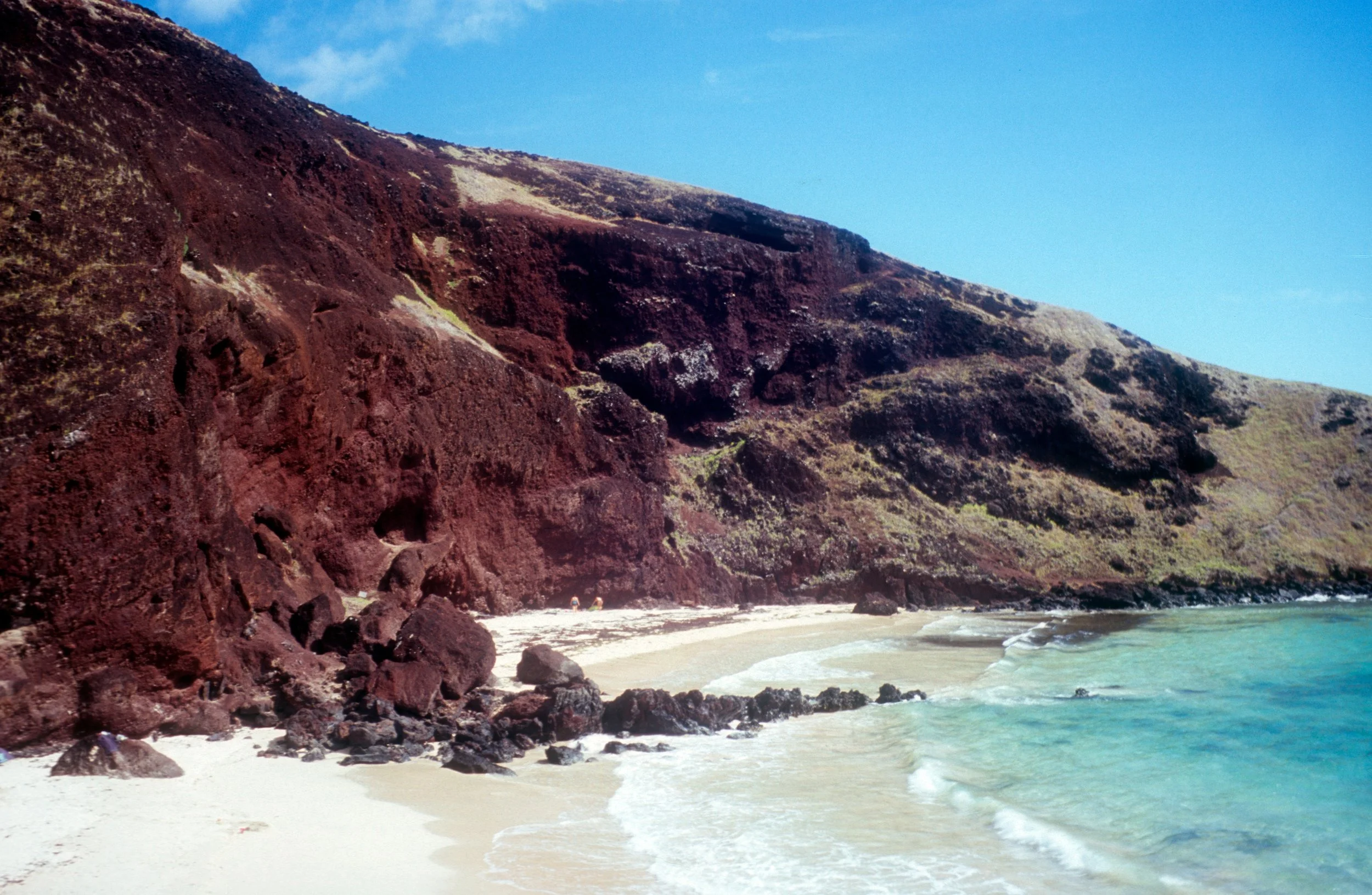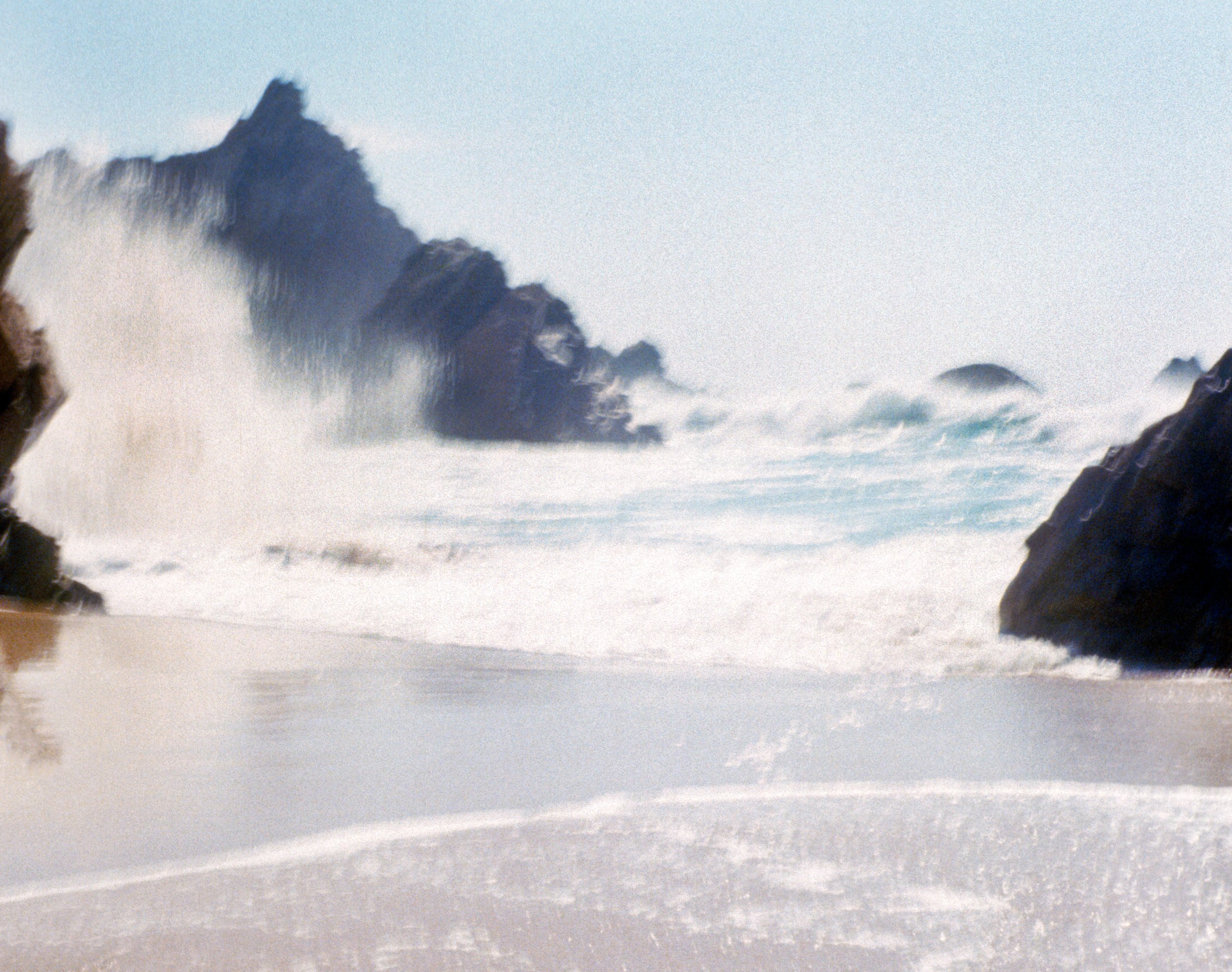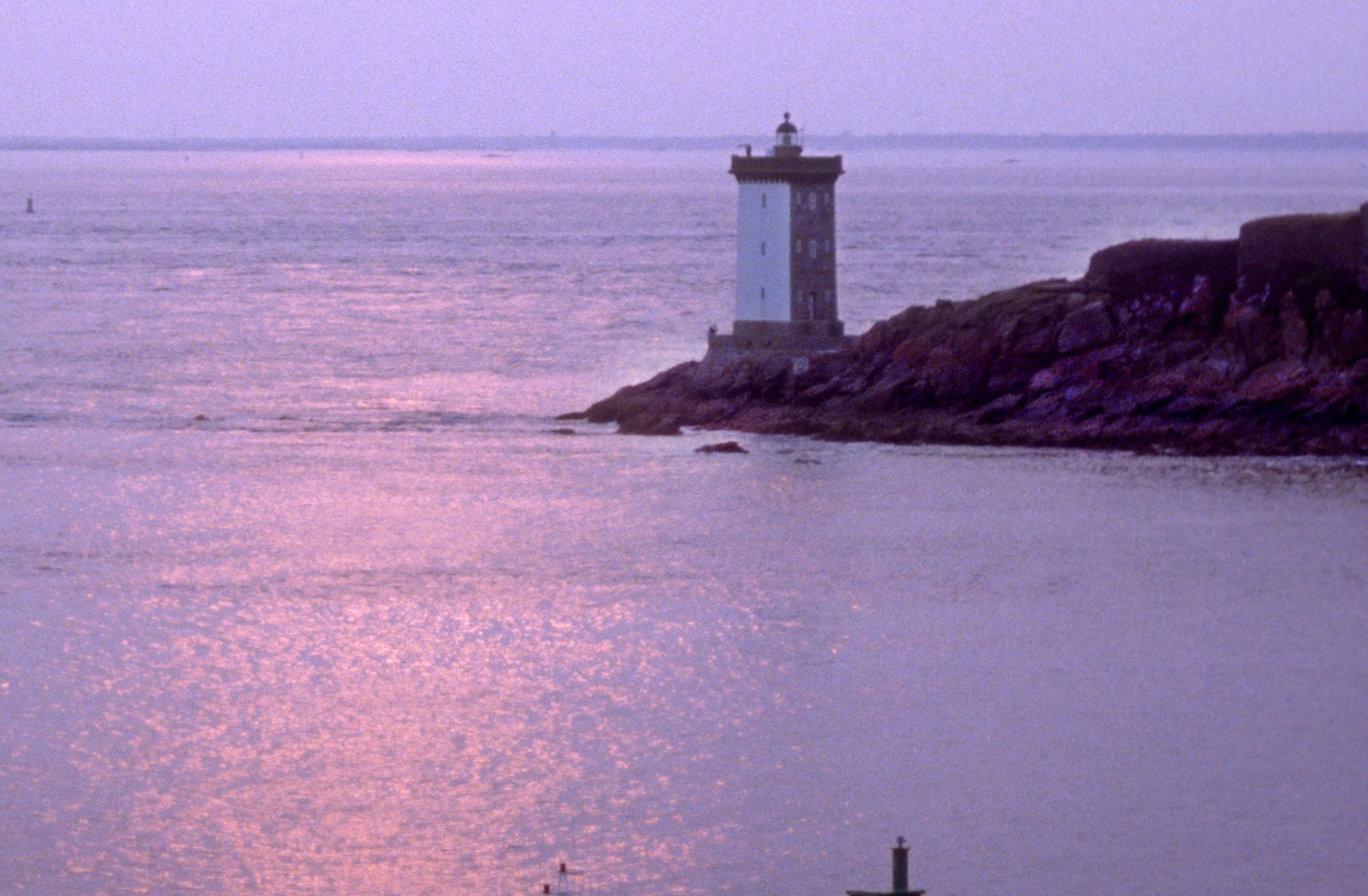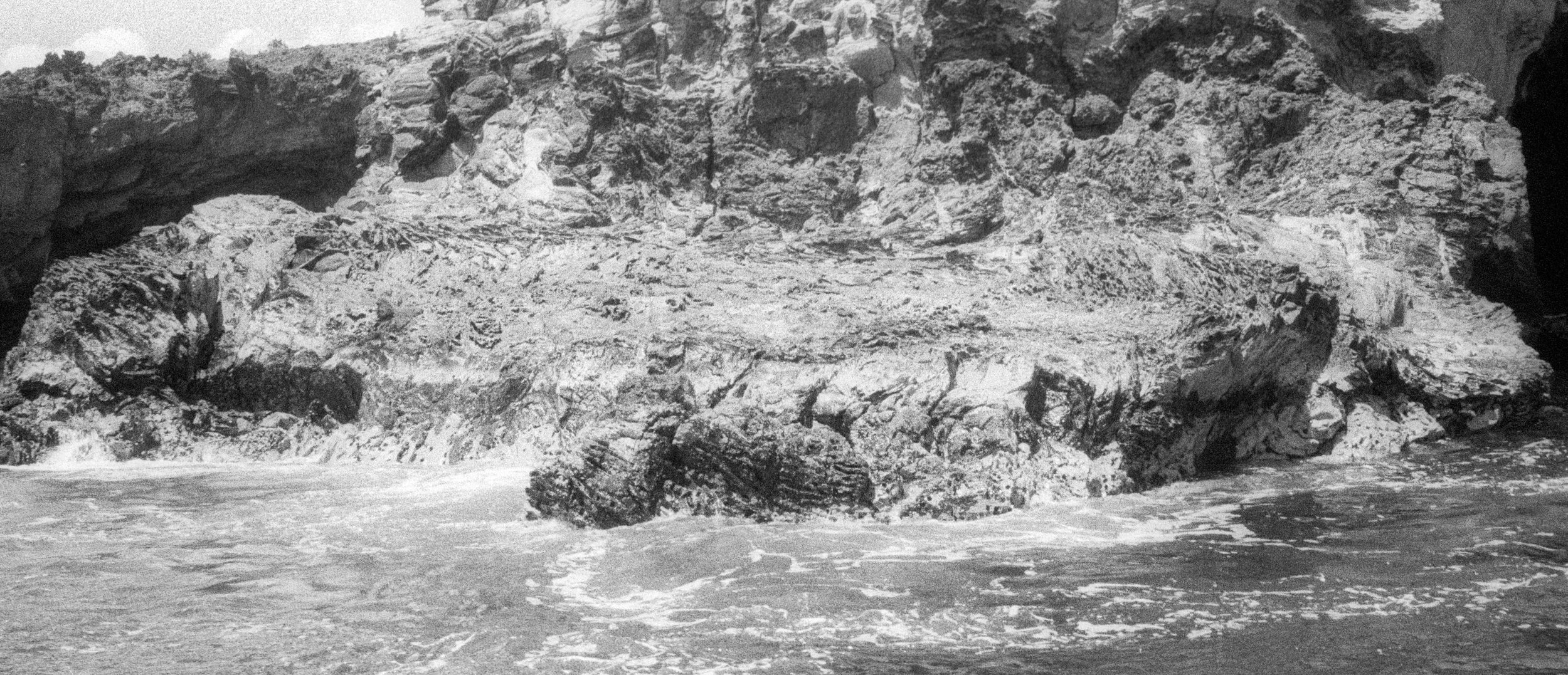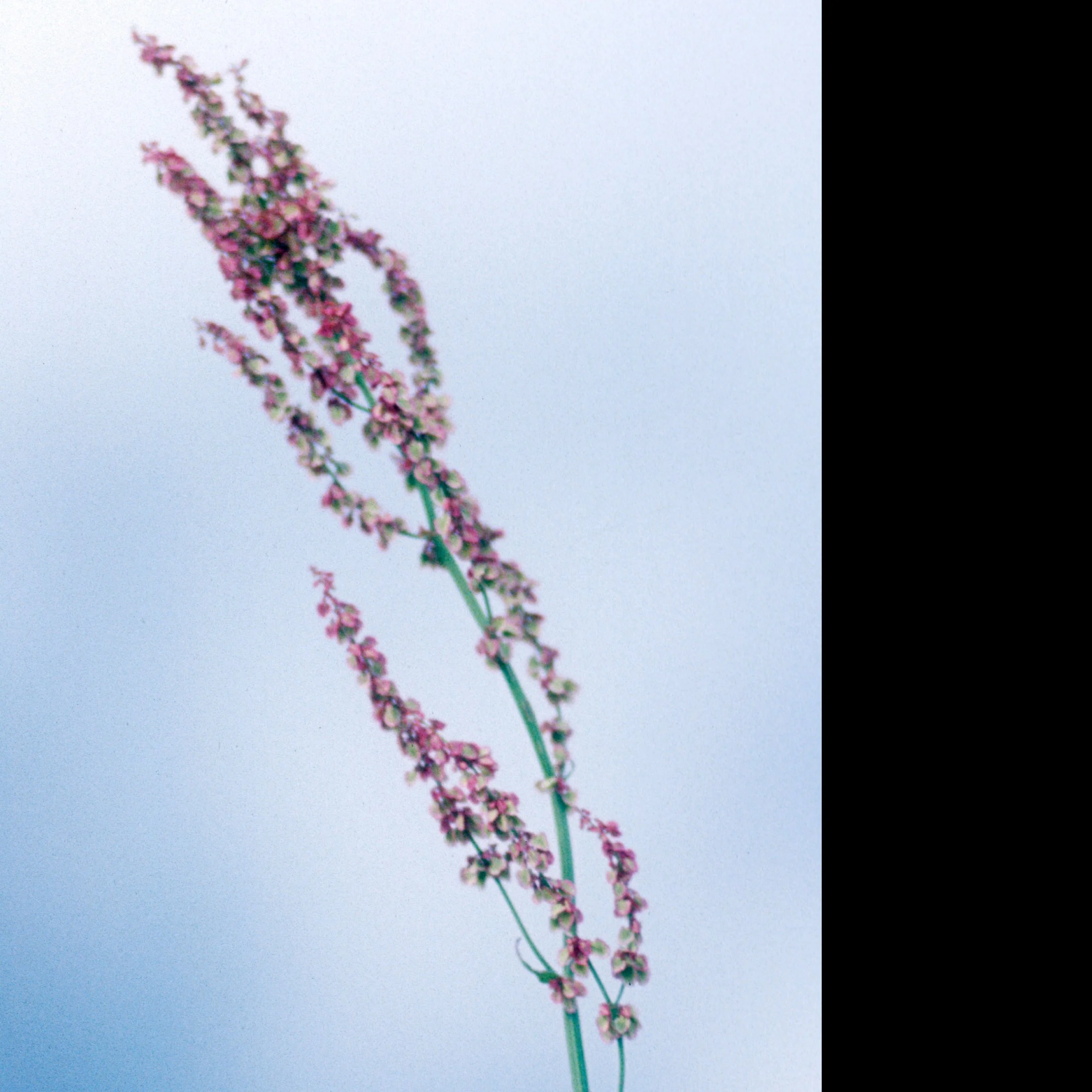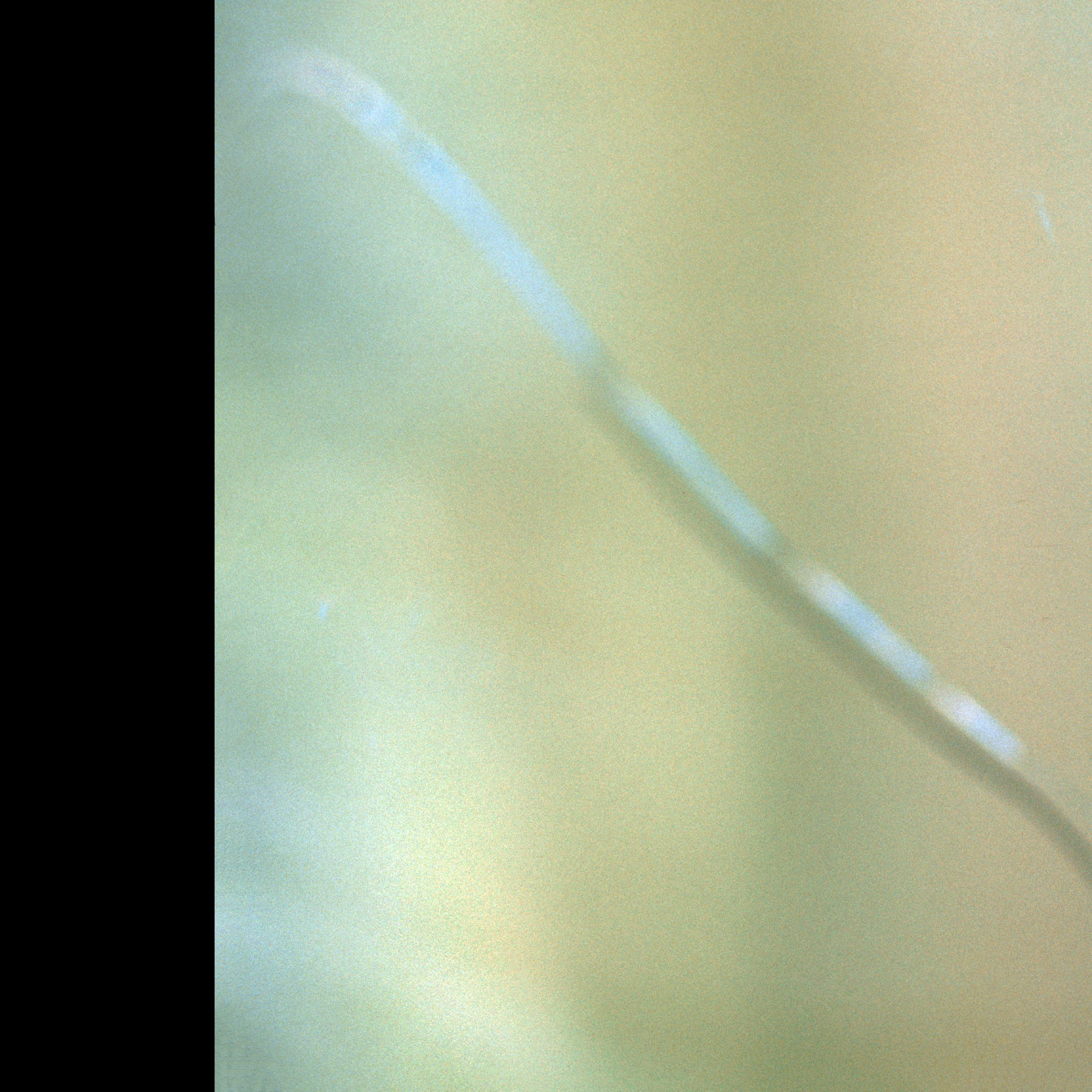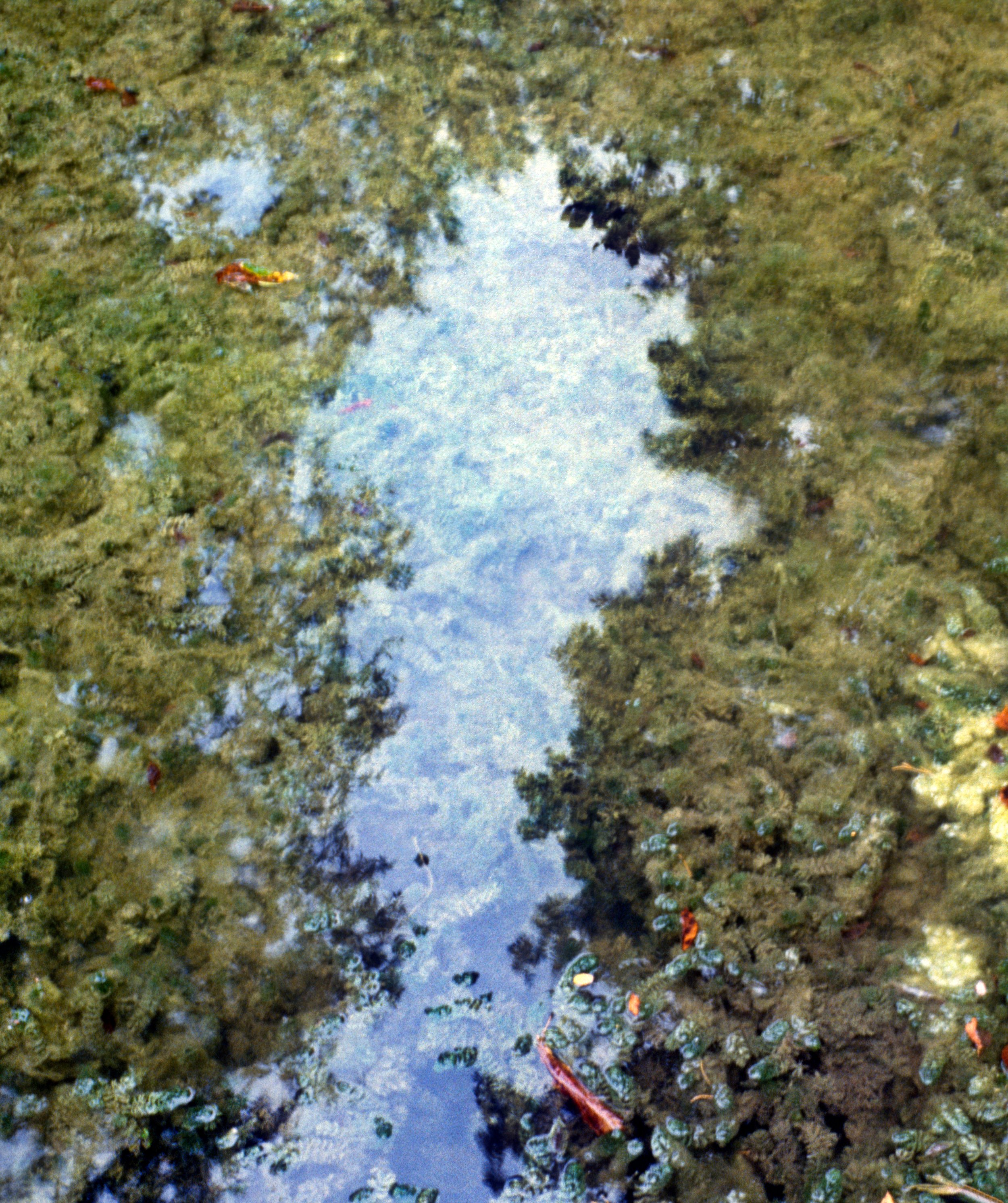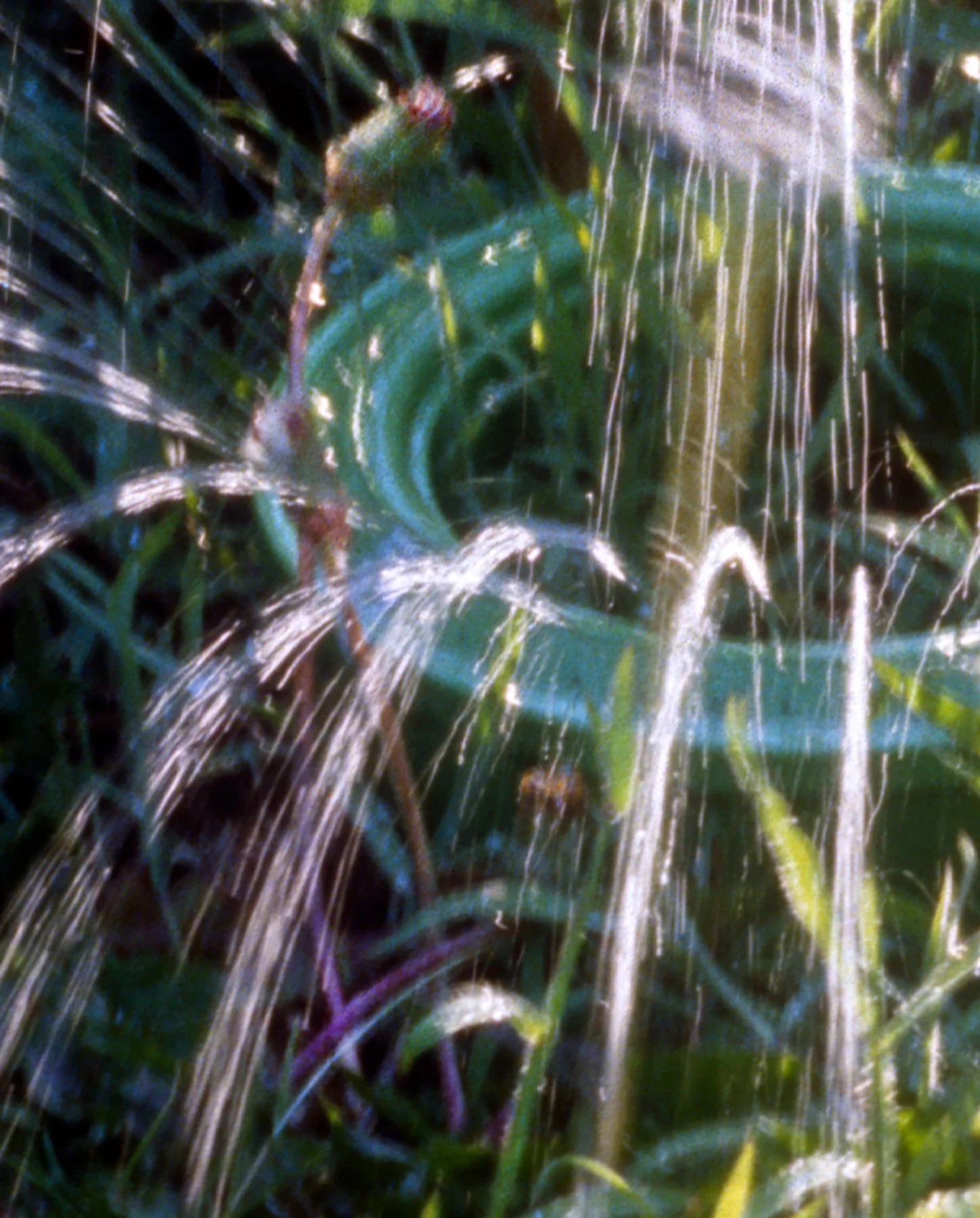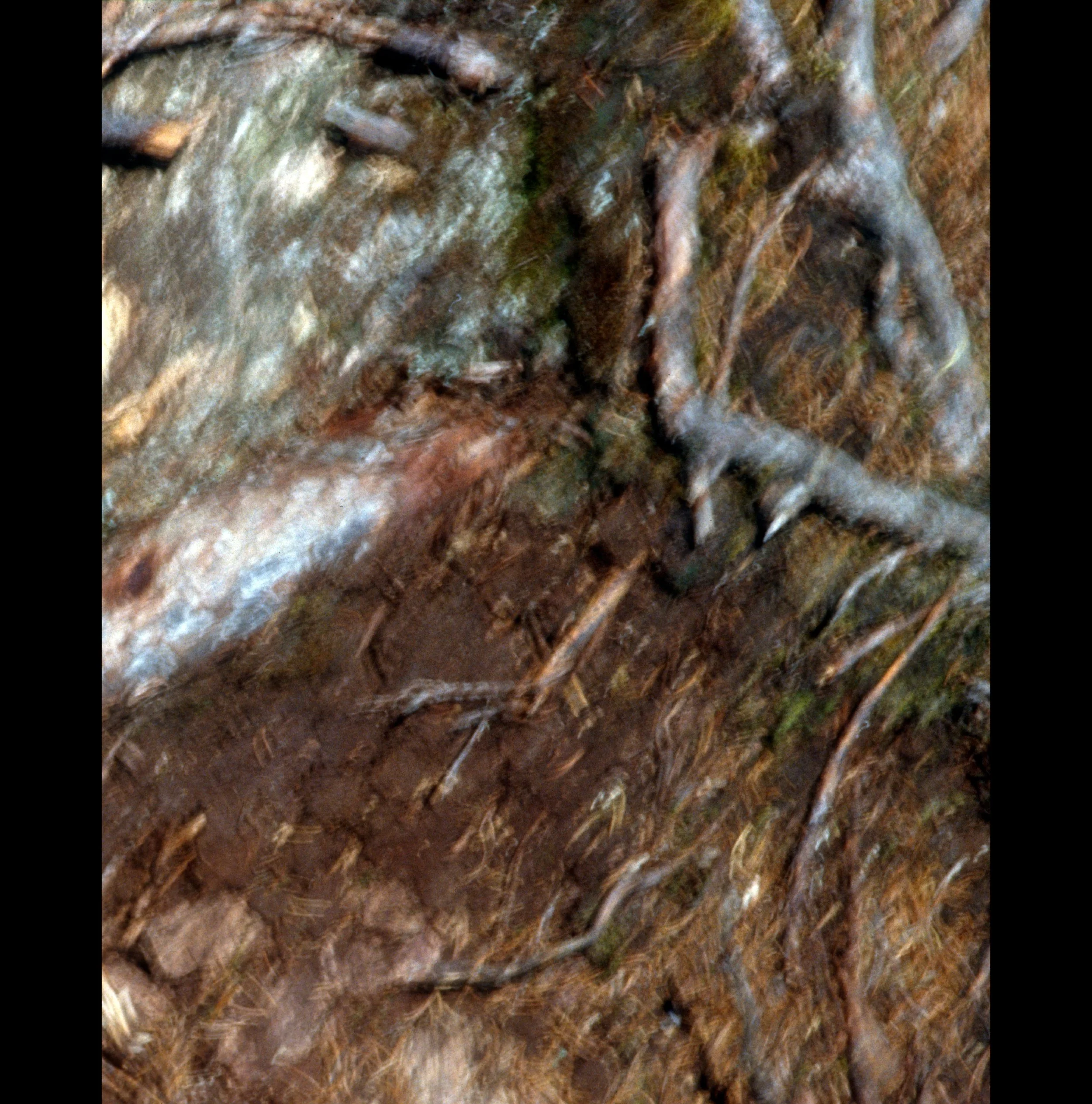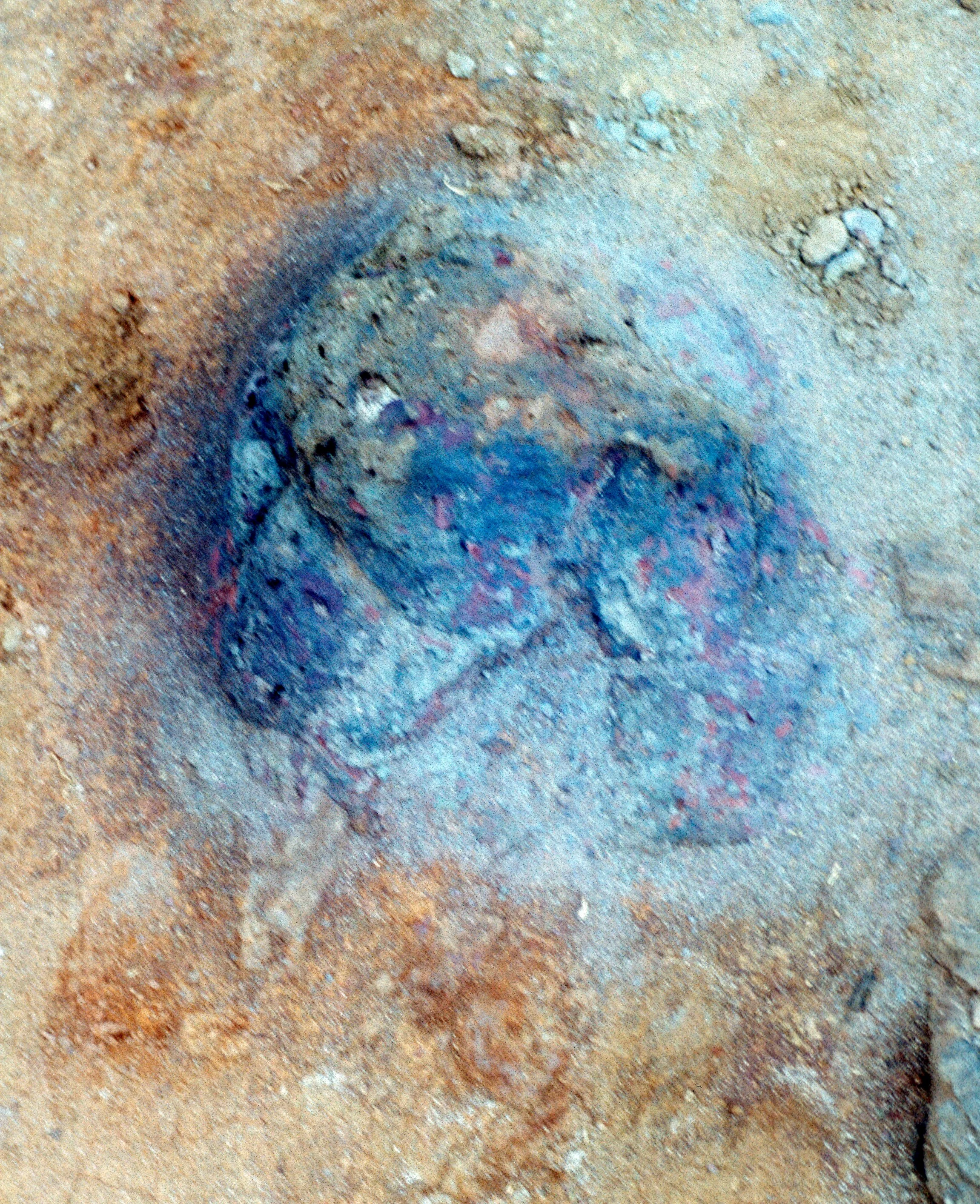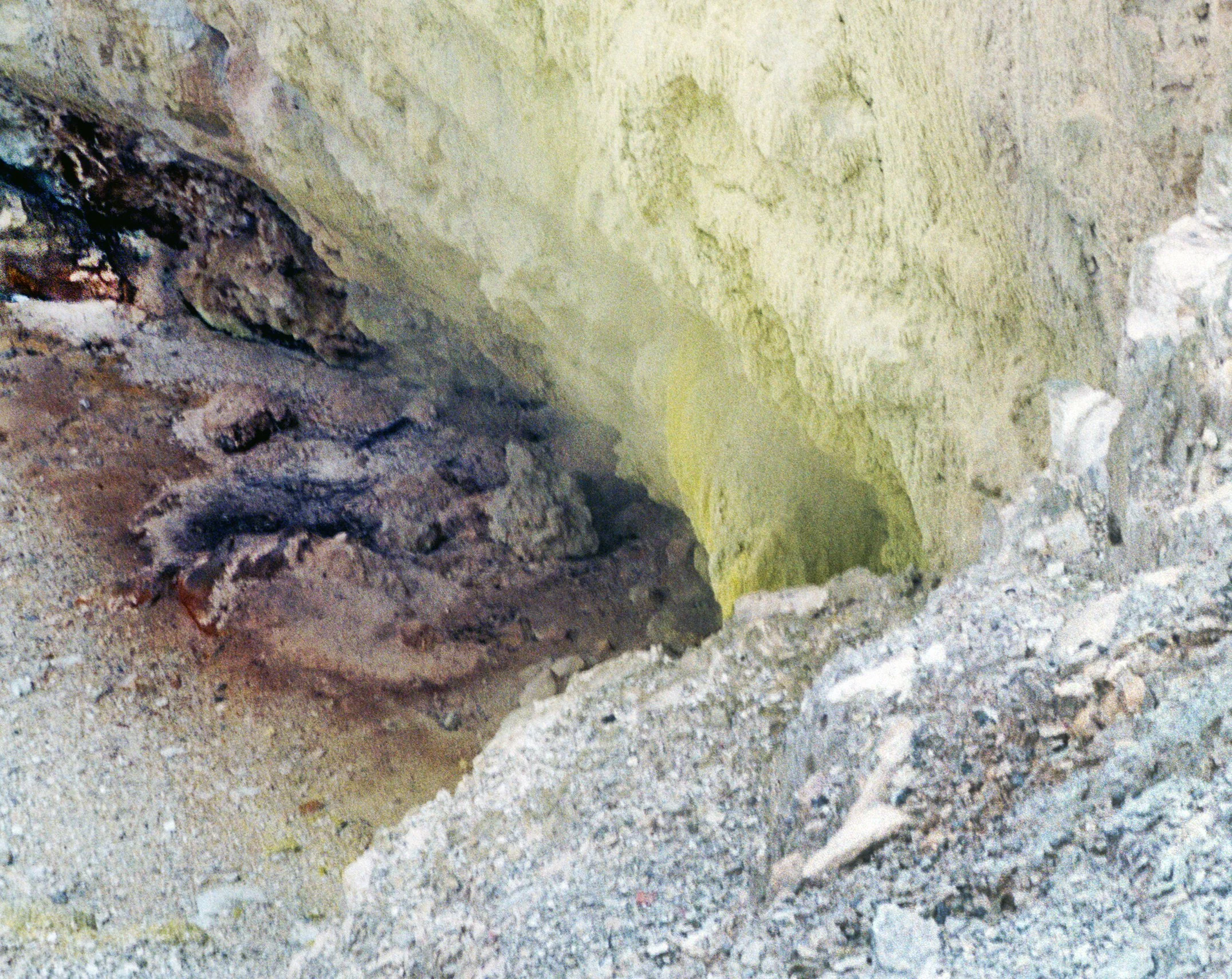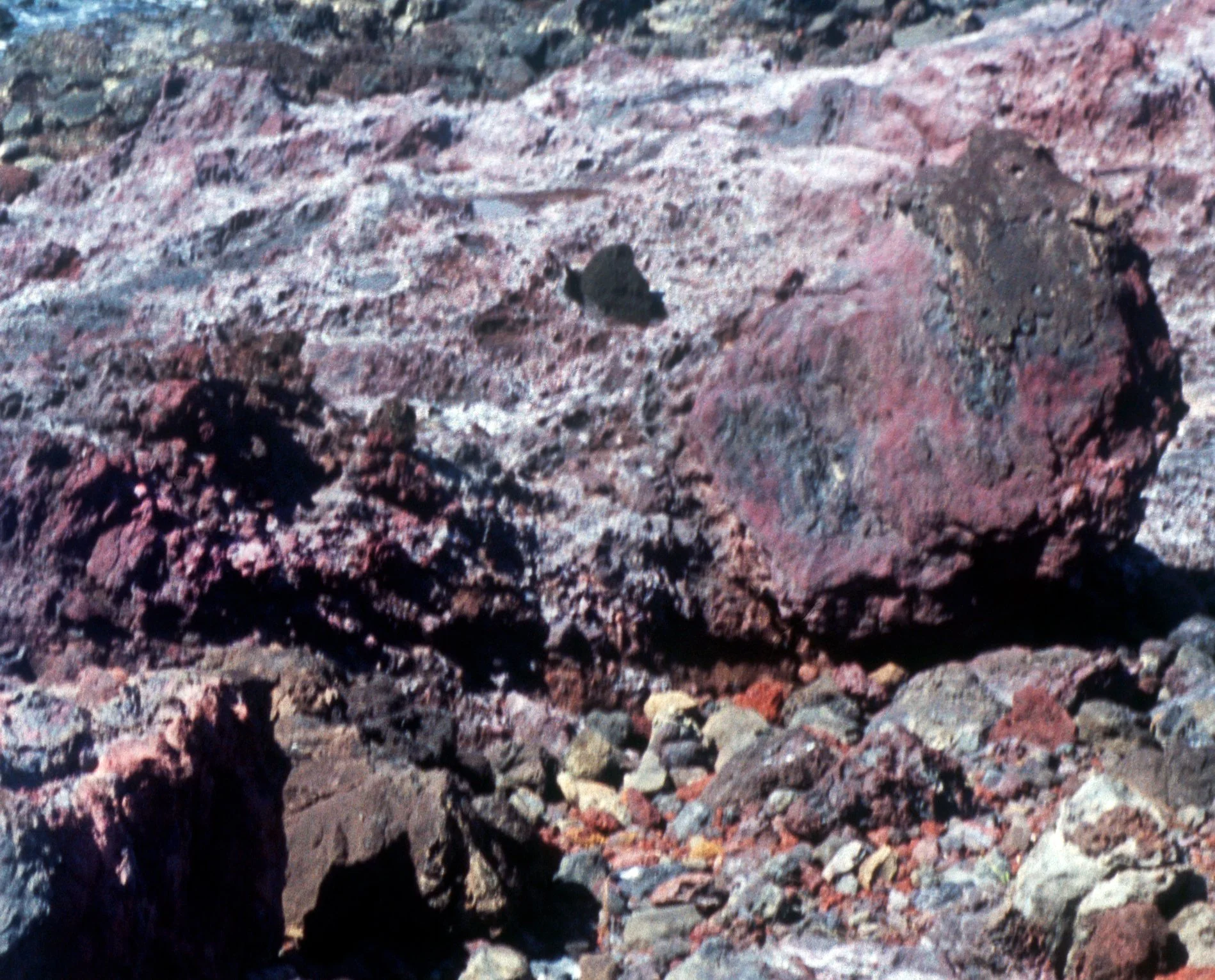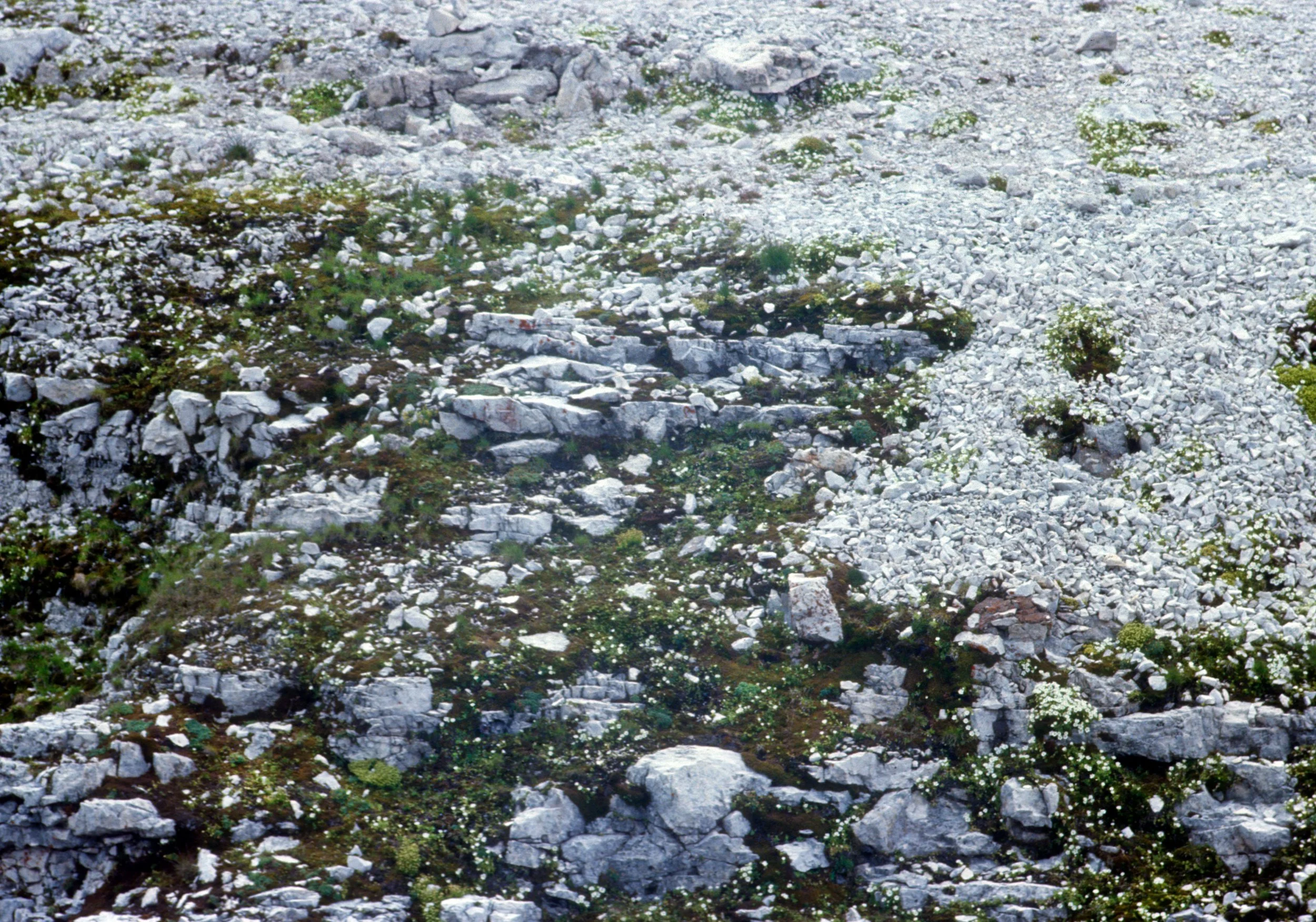Marcelo Gomes
記憶の中に息づく風景
Landscapes Alive in Memory
記憶の中に息づく風景
Landscapes Alive in Memory
Marceloの写真を眺めていると、ただ純粋に、色彩の美しさに身を委ねてみたくなる。心が落ち着くというか、まるで深呼吸をしているかのような感覚に包まれる。
2022年に発売された写真集『Pathêmes』は、写真そのものはもちろん、さまざまな紙の質感や印刷方法、さらには読者が自由にページを入れ替えられる仕様など、ANY OTHER NAMEによるデザインも秀逸だった。写真とデザインがこれほどまで緊密に手を取り合った作品集は、そう多くはないだろう。異なる時間軸で撮影された写真との触れ合いは、まるで彼の記憶の断片を辿る旅のようで、私はより一層、彼の写真の虜になった。
+knot projectを始動するにあたり、まずはじめに彼にコンタクトを取ったところ、多忙な日々の中でも快く取材を引き受けてくれた。今回は、ブラジル出身という自身のルーツや、色彩に対する向き合い方など、彼の感性の源泉やクリエイティビティの背後に迫ったインタビューとともに、本プロジェクトのために彼がセレクトしてくれた未公開写真をお届けする。Webサイトというデバイス越しの体験にはなるけれど、少しでも彼の記憶の断片に触れてもらえたら嬉しい。
When I look at Marcelo’s photographs, I simply want to immerse myself in the pure beauty of the colors. It has a calming effect, almost like taking a deep breath.
Published in 2022, the photo book Pathêmes is remarkable not only for the photographs themselves, but also for the design by ANY OTHER NAME—including the variety of paper textures, printing techniques, and even a structure that allows readers to rearrange the pages freely. There are few books where photography and design work together so seamlessly. Experiencing the photographs, captured across different timelines, feels like tracing fragments of his memory, and I became even more captivated by his photography.
As we launched +knot project, I reached out to him first, and despite his busy schedule, he kindly agreed to be interviewed. In this feature, we present an interview exploring the sources of his sensibility and creativity—his Brazilian roots, his approach to color, and more—alongside a selection of previously unpublished photographs he personally chose for this project. While this is an experience mediated through a digital device, I hope it allows you to touch even a fragment of his memory.
“間”にいるということ
Being “in-between”
- ブラジル出身とのことですが、どんな環境で生まれ育ったのでしょうか?また、その環境が写真家としてのあなたに影響を与えていると感じることはありますか?
- Since you are originally from Brazil, what kind of environment did you grow up in? And do you feel that environment has influenced you as a photographer in any way?
ブラジルの赤道近くにあるベレンという街で生まれて、家族と一緒に2歳のときにサンルイス、8歳のときに北東部沿岸のフォルタレザへ移りました。前作の『Pathêmes』では、この質問を自分にも投げかけみて、じっくりと答えを探してみました。その過程で、少し心の痛みも和らいだ気がします。
僕の人生のテーマの1つは、“間”にいることだと思います。僕は長い間ニューヨークに住んでいました。個人的に複雑な思いはあるけど、一部分ではニューヨーカーだと思っています。今はヨーロッパに住んで6年目になります。ここも自分にとって居心地の良い場所だと感じていて、そんな感覚が自分の中に根付いてきたんだと思います。
ブラジルは、常に自分の中に息づいています。ブラジルはアフリカとヨーロッパがアメリカ大陸で交わる場所でもあって、別の意味で“間”の国だと思います。僕は新しいものも古いものも同じように楽しんでいますが、そんな無邪気さや熱意をもっているのもブラジル的な気質だと思います。自分や他人の身体に対して自然でいられること、官能性、今この瞬間を生きること、それらもまたブラジル人らしさなんだと思います。
I was born in Belém, a city in the equatorial region of the country. My family then moved when I was 2, first to São Luis, then when I was 8 to Fortaleza, on the coast, in northeast Brazil. My last book, Pathêmes, allowed me to ask myself this question and begin answering it long form, which made it hurt a little less.
I think one of the matters of my life is that of being “in-between”. I lived in New York City for a long time. Despite my own issues with it, I am, in part, a New Yorker. I’ve now lived in Europe for 6 years — it feels right — and I think I’ve engendered that as well.
Brazil has been a latency inside of me; it’s Africa and Europe in the Americas. Brazil is another kind of “in-between”. I believe my innocence and enthusiasm for both new and old all at once is a very Brazilian trait, as is being comfortable with my body and others, sensuality, the present, and so many other things.
- 以前『+81』(Vol.46, 2009)で取材させていただいた際、写真に初めて触れた体験として、子どもの頃に家族とフロリダのディズニーワールドを訪れた時のエピソードを話してくれました。当時、写真のどんなところに惹かれたのでしょうか?
- In a previous interview with +81 (Vol.46, 2009), you shared an episode from your childhood when you first encountered photography — a trip to Disney World with your family. At that time, what exactly about photography fascinated you?
それが初めて写真と触れ合った瞬間で、もっと言えば、初めてカメラを渡されて、ミッションを与えられた体験でした。そのカメラは母が叔父から借りてきたもので、母は僕に、妹と祖母との旅行を記録してほしかったようです。ちなみに、僕にとってそれが初めてブラジルを離れた経験でもありました。叔父にはこの貴重なカメラを丁寧に扱うと誓いました。
当時のブラジルは長い軍事独裁を終えたばかりで、輸入品はほとんどなく、すごく保護主義的な経済だったので、電子機器がとても手に入りにくい時代だったんです。そのカメラはかなり高性能なプロシューマー向けの35mmのミノルタ製で、オートフォーカスや絞り優先、自動巻き戻しなど、たくさんの機能が搭載されていました。当時の僕にとって、写真はすごく実用的なものというイメージで、実を言うとそのときはまだそんなに魅了された感覚はなかったんです。
That was my first contact with photography, or more specifically, the first time I had been given a camera and a mission. It was my uncle’s equipment. My mother asked her brother (my uncle) to loan me his camera; mom wanted me to document our holiday in Disneyworld — my sister, my grandmother, and myself — which incidentally was the first time I had left Brazil. I had sworn to my uncle that I was responsible enough to operate his precious piece of equipment.
At that time, most electronics were very difficult to come by because Brazil was just coming out of a long military dictatorship and was still a very protectionist economy, essentially no imports. The camera itself was a fairly advanced prosumer 35mm Minolta model with lots of electronic functions — auto focus, aperture priority, auto rewind, and so on. At that time, I understood photography as a very functional endeavour, so fascination didn’t actually play a part.
- 写真家として活動される前は、Index Magazineでインターンをされていたそうですね。
- Before becoming a photographer, you interned at Index Magazine, right?
実際、Indexでは4年間働いていました。たしかインターンは6ヶ月くらいだったと思います。どうしてもそこで働きたくて、自分にできることは何でもやろうと頑張ってました。今もそうですが、音楽にすごく興味があったので、雑誌に広告を出しているレコード会社とのやり取りを引き継ぎたいと提案して、新しい広告を取ったりしていました。
その後、Mark Borthwickのアシスタントをするために離れましたが、Indexでの時間は僕にとってまさにアートスクールのようなものでした。あの頃の経験が自分を形成していると思いますし、Peter Halleyのスタジオにいたことで、彼の厳格なフィルターを通して、たくさんのカルチャー、本、アート、理論、批評に触れることができました。自分が興味のあることを自由に追求したり、また新たな発見をすることもできました。
いろんなギャラリストやキュレーター、コレクターたちが訪ねて来ていましたが、Wolfgang Tillmans、Juergen Teller、Mark Borthwickとか、写真家もよく来ていましたね。Markとはそこで出会ったんです。
I actually worked at Index for 4 years. If I remember correctly, my internship lasted around 6 months. I really wanted to work there, so I made myself useful in whatever way I could. I had — have — a keen interest in music, so I suggested that I take over the relationship with the record labels that advertised in the magazine, whilst also procuring others.
I left to go assist Mark Borthwick, but working at Index was my art school. My years there were very formative, and I think being in Peter Halley’s painting studio exposed me to a lot of culture, books, art, theory, criticism — all through a rigorous filter: Peter’s. I was allowed to pursue all my interests and discover entirely new ones.
Different gallerists, curators, and collectors would come by, and so would photographers. Wolfgang Tillmans used to visit, as did Juergen Teller and Mark Borthwick. This is how I met Mark.
絵画への嫉妬
Jealousy of painting
- 影響を受けた写真家はいますか?
- Are there any photographers who influenced you?
Tillmansはとても大きな存在で、ものすごく影響を受けています。Markは本当に素晴らしいメンターで、彼からも多くを学びました。
Tillmansからは挙げきれないくらいたくさんの影響を受けていますが、まず思い浮かぶのはポートレートですね。彼のフォーマルな状況で人を撮る力は、今でも誰も真似できないと思っています。僕にとって、彼のポートレートは正しい方法で撮られたポートレートだと思っていて、フォーマルでありながらカジュアルさもあって、そこに感じられる真剣さがとても好きですね。同時に、彼にとってすごく個人的なものとしても伝わってきます。
Markからは、アーティストとしてどうあるべきか、どう好奇心を持ちつづけるか、ある程度の生き方を学びました。彼に惹かれたのは、ある種のパトスというか、感情の美しさが写真に表れているところでした。
Tillmans looms very large for so many of us and is a massive influence. Mark was an incredible mentor and an education.
From Tillmans, there are too many things to list here, but for some reason portraiture is the first thing I think about. I still believe that his ability to shoot people in formal situations is like no one else’s. Tillmans, to me, does portraiture the correct way. It is formal and loose at the same time. There’s something very serious about it, which I like very much, whilst at the same time coming across as incredibly personal to him.
From Mark, I think I learned how to be an artist. How to remain curious, and how to live, to a certain extent. What drew me to him was a sort of pathos, an aesthetic of sentiment, which would be reified in his actual photographs.
- 人を撮影するとき、どんな瞬間にシャッターを押したくなりますか?
- When you photograph people, what moments make you want to press the shutter?
正直深く考えているわけではないですが、挑戦することに惹かれるのはたしかですね。新たな人に出会ったときの驚きや発見があるからこそ、ポートレートの仕事が恋しくなるんです。時間、場所、光、被写体の個性、自分が持っているフィルムの数とか、撮影にはさまざまな制約があって、その中で最終的に写真が形作られていくんです。自分自身と遊ぶゲームのようなもので、それがとても楽しいんですよ。
I’m not sure that I think about this much, but I can tell you that the challenge attracts me. Which is why I miss portrait commissions, there’s the surprise of meeting someone new. There are extensive limitations, such as time, place, light, personality, and how much film I have on me, that end up making the picture what it becomes. It’s like a game I play with myself. I very much enjoy this.
- 一方で、静物や自然、風景を撮影するときはどんな瞬間や被写体に惹かれますか?
- And when you’re photographing still life, nature, or landscapes, what kinds of moments or subjects attract you?
写真を撮る一番の原動力は絵画ですね。これまで自分が写真でやってきたことは、絵画への嫉妬心みたいなものから来ていて、いつも目指しているのは、どこか絵画的だと感じられるものです。自分の記憶の奥深くにあるNicolas PoussinやJean-François Milletの作品のようなイメージを、写真で表現したいと思っています。
Painting is my main motivation when making photographs. Most of what I’ve done so far in photography has been because of a jealousy of painting, and this is what I am just about always trying to accomplish — something painterly, a Nicolas Poussin, or Jean-François Millet that I can recognise somewhere deep in the recesses of my own memory.
- あなたの作品を拝見していると、色彩の美しさに魅了されます。写真で色を意識するようになったのはなぜでしょうか?
- Looking at your work, I’m deeply drawn to the richness and beauty of your colors. Why did you begin to consciously focus on color in your photography?
ありがとうございます。最初の理由としては、無知さ、ブラジルという環境、そして色の即時性が混ざり合ったものだったと思います。当時の僕は、どれだけ色が複雑なものかを十分に理解していなくて、ただその魅力に引き込まれていました。色というのは大人になってくると恐ろしく感じるもので、それは当然だと思います。まだ若くて、写真の教育をまともに受けていなかった僕には恐れがなかったんです。無邪気だったんですね。
今ではある程度扱えるようになった感覚はありますが、昔より色に対しては恐れを抱いてるかもしれません。若い頃は、色は喜びに満ちた場所のようなもので、そこに行けばすぐに何かを感じられると思うものです。それはまた、努力やスキルを洗練させなくても、見る人に何かを感じさせることができるということです。
Thank you. Initially, I think the reason was an amalgamation of naiveté, Brazil, and the immediacy of colour. I don’t think I quite understood how complex colour is, and I simply let myself be pulled in. Colour frightens most grown-ups — as it should — and being young, lacking a formal photography education, I was unafraid. I was naive.
I am probably more intimidated by colour today than I ever was, despite feeling that I have, to a certain extent, tamed it for my use. I think, as a young person, colour is somewhere joyous you can go and feel something right away. It also means you can make other people feel without much effort or sophistication.
感覚によって、感覚を紡ぐ
By feeling, weaving feeling
- 写真以外で、影響を受けたカルチャーはありますか?
- Outside of photography, are there other cultural influences that have shaped you?
文学と音楽はどちらも僕にとってとても大切です。最近は、自分でも文章を書くようになったので、文学の方が大きいかもしれません。以前から書き手的な視点で本を読んでいたので、書きたいという衝動が抑えられなくなるのは自然なことでした。それをきっかけに、『Pathêmes』でエッセイを書くことになったんです。エッセイを書くのは今までで一番大変な経験でしたけど、同時に一番充実感がありました。
読書を通して、反復や質感、色など、自分が写真に惹かれる理由を見つけることができるんです。例えばMarcel Proustは、とても視覚的で、言語と記憶にまつわることを書いていて、まさに僕の人生における仕事のテーマそのものだと思っています。
Literature and music are both very important to me, maybe more literature now since I have begun to write. I’ve been a writerly reader for a while now, and it was natural that the impetus to write would reach a boiling point. This resulted in my setting out to write the essay for Pathêmes. Writing that essay for the book was probably the hardest — and most satisfying — thing I’d ever done.
In reading, I find explanations for some of the things that interest me in photography: repetition, texture, colour. Marcel Proust, for example, is so visual and entirely about language and memory, which is what I believe my life’s work to be about.
- 最後に、2022年に出版された『Pathêmes』についてお伺いさせてください。『Pathêmes』は「目的のない」を意味しているようですが、なぜこのタイトルをつけたのでしょうか?
- Finally, I’d like to ask you about the Pathêmes, published in 2022. The title seems to mean 'without purpose.' Why did you choose it?
このタイトルを選んだのは、本のアイディアを考えはじめた頃に、Roland Barthesの本をたくさん読んでいたからです。彼の研究は主に記号学に関するもので、物事を単位や記号に分解する傾向があります。自分も作品の最小単位についてよく考えていて、それは自分が使っているフィルムの粒子だと思っています。小さな水の泡のように想像するのが好きで、それが自分の作品の始まりでもあるんです。
この本では多くの写真集のようにテーマを1つだけに絞ることはしたくありませんでした。感覚によって、感覚についてまとめたものを作ろうと思ったんです。「パテーム(pathême)」は感情や感覚の単位を表したもので、『Pathêmes』はそれらがいくつも集まった集合体です。それに、この言葉自体が美しくて、文字としても魅力的だと思ったんです。
I chose this title because I was reading a lot of Roland Barthes at the time I first started working on the idea of this book. Barthes’ work is mainly in semiology, which tends to break things down to a unit or a sign. I was thinking a lot about the basal unit of my work, which is the grain of the film I use — I like to imagine it as a very very small water bubble— and the beginning of my work.
I didn’t want to create a book about one specific subject which a lot of photography monographs tend to be, so I thought about making a book that was held together by and about a feeling. A “pathême” is the semantic unit of sentiment, feeling, and so Pathêmes are many of these put together. I also think it’s a beautiful word, graphically very charming.
- 『Pathêmes』はゴムバンドだけで綴じられていて、読者が自由にページを入れ替えられる仕様になっていましたね。Webサイトも、画面をクリックすると写真がランダムに現れて、2枚の写真の組み合わせを楽しめる面白いデザインでした。
- Pathêmes was bound just with a rubber band, so readers could freely shuffle the pages. The website was set up so that clicking on the screen would show photos at random, letting viewers enjoy unexpected pairings of two images.
本をデザインしたのは、Ben AtkinsとNick Blakemanです。Benはこの本の出版社でもあります。Any Other Nameはロンドンのクリエイティヴエージェンシーで、Self Titledがその出版部門です。これが彼らにとっては初めての出版物でした。
まずは500枚の写真をざっと編集して、そこから250枚ぐらいまで絞り込む作業をしましたが、これが少し大変でしたね。最終的な素材はsmall、medium、large、extra largeの4つのフォルダに分けてBenとNickに渡し、そこから彼らがレイアウト組み上げていきました。僕には到底できなかったと思います。本の完成まで2年近くかかりましたが、彼らのデザインは本当に素晴らしく、パートナーでいてくれたことにとても感謝しています。
Webサイトも彼らがデザインしてくれました。この仕組みはタイトルとは直接的に関係ありませんが、とても気に入っています。本では全てを緻密にレイアウトしてたのに、Web上ではそれを茶化すかのように、偶然に写真が組み合わさっているだけなんですよ。
The design of the book is by Ben Atkins and Nick Blakeman. Ben is also the publisher of the book. Any Other Name is a creative agency in London, and Self Titled is their publishing imprint. This was their first book.
I fairly easily edited some 500 images in order to make this book, then had to edit them down to around 250, which was a bit more difficult.I then delivered the final files to Ben and Nick in four different folders: small, medium, large, extra large. They worked on the layout from there. I could not have done that — they were masterful in the design, and I am beyond grateful to them for being such fantastic partners in making this book, which took almost 2 years to finish.
The website was also all Ben and Nick. This does not relate to the title, but I like it because it makes light of how precise we all were in laying everything out, only to let luck pair things on that site.
Profile
写真家。ブラジル出身。現在はパリ在住。アーティストのPeter Halleyとキュレーター、批評家のBob Nickasが立ち上げたIndex Magazineで経験を積んだ後、Mark Borthwickのアシスタントを務める。2008年に独立し、ChanelやComme des Garçons Parfumsなどのブランドヴィジュアルを手掛ける。2022年には、Self Titledから写真集『Pathêmes』を発売。
Photographer, born in Brazil and currently based in Paris. He gained experience at Index Magazine, founded by artist Peter Halley and curator/critic Bob Nickas, and later worked as an assistant to Mark Borthwick. In 2008, he became independent and has since created visual work for brands such as Chanel and Comme des Garçons Parfums. In 2022, he released the photobook Pathêmes through Self Titled.
marcelogom.es
pathem.es
IG: @marceloagomesEdit & Text: Yuki Akiyama
